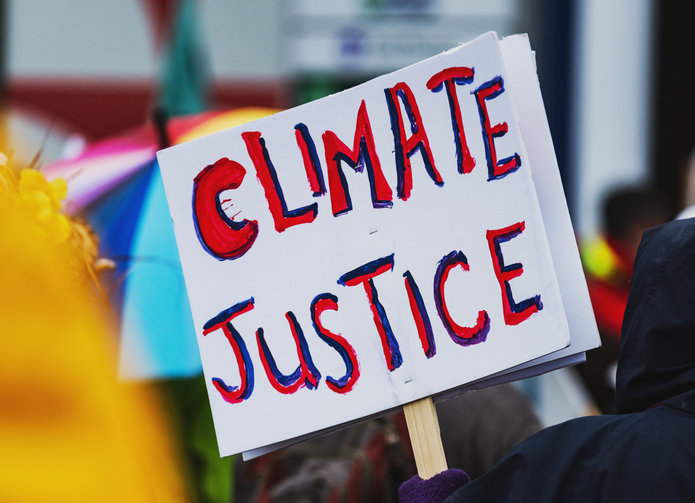While there are lots of different definitions of climate justice, they all agree that climate justice “connects the climate crisis to the social, racial and environmental issues in which it is deeply entangled. It recognizes the disproportionate impacts of climate change on low-income and BIPOC communities around the world, the people and places least responsible for the problem.”
Some great examples include:
According to Yale Climate Connections:
“Climate justice” is a term, and more than that, a movement that acknowledges climate change can have differing social, economic, public health, and other adverse impacts on underprivileged populations. Advocates for climate justice are striving to have these inequities addressed head-on through long-term mitigation and adaptation strategies.
According to UNICEF:
Development cannot be delinked from climate action and vice versa. Throughout, a human rights base approach is necessary. For example, with the rapid pace of urbanization, a rights-based approach is crucial for addressing water, sanitation and health, challenges which are exacerbated by climate change in the formalizing of informal settlements.
This entails ensuring representation, inclusion, and protection of the rights of those most vulnerable to the effects of climate change. Solutions must promote equity, assure access to basic resources, and ensure that young people can live, learn, play and work in healthy and clean environments.
While everyone must do their part to address climate change, the burden should not be borne by those that have contributed the least. The world’s richest 10% are responsible for 50% of GHG emissions and the poorest 50% are only responsible for 10% despite population and energy consumption increasing.
The intersectionality of these challenges must be acknowledged in order to address them holistically. For example, some climate projects inadvertently create climate injustices when local communities are displaced for a conservation or renewable energy initiative.
The climate crisis is the result of a system which prioritizes profit over sustainability. As such, solutions will require a transformative systems lens and approach. Approaches that address the unequal burdens in certain communities and which realigns the economy with natural systems. The new green learning agenda proposes such an approach for an education system that develops and nurtures sustainable mindsets, as well as green skills in order to achieve this transformation.
According to MIT:
Climate justice is the principle that the benefits reaped from activities that cause climate change and the burdens of climate change impacts should be distributed fairly. Climate justice means that countries that became wealthy through unrestricted carbon emissions have the greatest responsibility to not only stop warming the planet, but also to help other countries adapt to climate change and develop economically with nonpolluting technologies.
Climate justice also calls for fairness in environmental decision-making. The principle supports centering populations that are least responsible for, and most vulnerable to, the climate crisis as decision makers in global and regional plans to address the crisis. It also means acknowledging that climate change threatens basic human rights principles, which hold that all people are born with equal dignity and rights, including to food, water, and other resources needed to support health. Calling for climate justice, rather than climate action, has implications for policymaking, diplomacy, academic study and activism, by bringing attention to how different responses to climate change distribute harms and benefits, and who gets a role in forming those responses.
According to the UC Center for Climate Justice:
Climate justice connects the climate crisis to the social, racial and environmental issues in which it is deeply entangled. It recognizes the disproportionate impacts of climate change on low-income and BIPOC communities around the world, the people and places least responsible for the problem.

